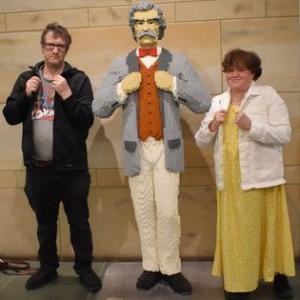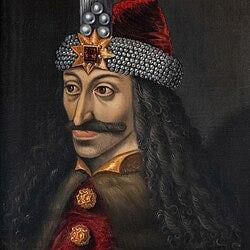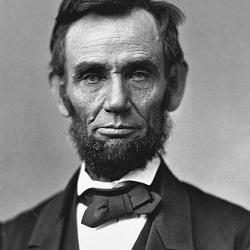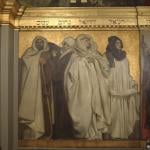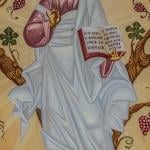Life in 1889
1889 is the crossroads where the descendants, living persons and ancestors of previous, current and future influencers meet on the chronological timeline of Earth’s history.
This is a extensive short list of some of the highlights of important events and people who lived and shaped that year.
Including
- A new tourist site in France.
- The company that eventually gave us Super Mario Bros
- The forerunner of the modern pizza.
- A company that gave us the world’s favorite soft drink.
- A crime fighter’s superhero work.
- A rush to obtain a home in Oklahoma.
- 4 more States added to the U.S.
- A saint’s missionary work in America.
It is a good resource for
- Time Travelers looking for info on a good year to visit and sightsee.
- An aspiring author who wants info for that great historical novel you want to write.
- History and Trivia buffs.
- A list of people to pray for who might possibly be in need of prayers either before they died or after they died.
Note: All Descriptions are taken from Wikipedia.
Exciting New Discoveries may be added.
This article is part of a series of Notable People Alive In 1889
1889
Picture This
The World of Art in 1889
Thomas Eakins – The Agnew Clinic

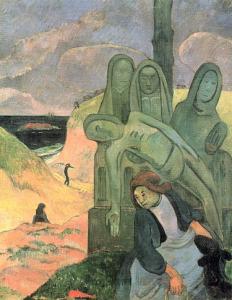
The Yellow Christ (Pont-Aven, c. September)

Vincent van Gogh gives us his painting of The Starry Night at Saint-Rémy-de-Provence.
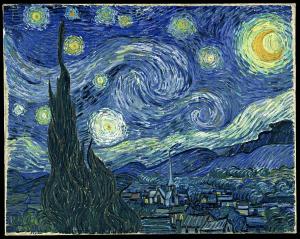
News of the World in 1889
The Starry Skies above
- January 1 The total solar eclipse of January 1, 1889 is seen over parts of California and Nevada.
- June 28 – The annular solar eclipse of June 28, 1889 is visible in Atlantic Ocean, Africa and Indian Ocean, and is the 47th solar eclipse of Solar Saros 125.
Notable Events
- January 30, 1889 – Rudolf, Crown Prince of Austria and his mistress Baroness Mary Vetsera commit a double suicide (or a murder-suicide) in the Mayerling hunting lodge. The Emperor had Mayerling converted into a penitential convent of Carmelite nuns and endowed a chantry so that daily prayers would eternally be said by the nuns for the repose of Rudolf’s soul.
- March 4 – Benjamin Harrison is sworn in, as the 23rd President of the United States.
- March 15 – Samoan crisis: German and American warships keep each other at bay in a standoff in Apia Harbor, ending when a cyclone blows in and sinks them all.
- April 22 – At high noon in Oklahoma Territory, thousands rush to claim land in the Land Rush of 1889. Within hours the cities of Oklahoma City and Guthrie are formed, with populations of at least 10,000.
- May – 1889–1890 pandemic of influenza first reported in the city of Bukhara in the Central Asian part of the Russian Empire.
- May 11 – Wham Paymaster robbery: An attack upon a U.S. Army paymaster and escort in the Arizona Territory results in the theft of over $28,000, and the award of two Medals of Honor.
- May 31–Johnstown Flood: The South Fork Dam collapses in western Pennsylvania, killing more than 2,200 people in and around Johnstown, Pennsylvania. Within days after the Johnstown Flood The Founder of the American Red Cross Clara Harlowe Barton (December 25, 1821 – April 12, 1912) was led her delegation of 50 doctors and nurses in response, founding what would become Conemaugh Health System.
- June 6 – The Great Seattle Fire ravages through the downtown area without any fatalities.
- Aug. 22, 1889-Barnum and Bailey’s Circus suffered a train crash in Potsdam where they were traveling through from Gouverneur on their way to Montreal, where they was scheduled to perform the next day. 4 years earlier on September 15, 1885. the Circus’s star Elephant Jumbo was killed when a train struck him as he was trying to save the life of another elephant named Tom Thumb as he was strolling along some railroad tracks.
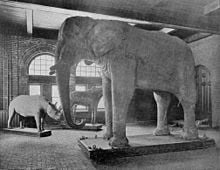
An 1889 photograph of Jumbo at Barnum Hall, the taxidermy work of Carl Akeley
- November 17 – The Brazilian Imperial Family is forced into exile in France.
- December 1 – The 1889–1890 pandemic of influenza first peaks, in Saint Petersburg, Russia.
- Triceratops has been documented by numerous remains collected since the genus was first described in 1889 by American paleontologist Othniel Charles Marsh.
- Returning to France from his expedition up the Niger River, Louis Gustave Binger reveals that the Mountains of Kong do not exist
- The Batman begins his war on crime.
Meanwhile in Africa
North Africa
Omar al-Mukhtar
(August 20, 20, 1858 – 16 September 16 1931)
Called The Lion of the Desert, known among the colonial Italians as Matari of the Mnifa, was a Libyan revolutionary and Imam who led the native resistance in Cyrenaica (currently Eastern Libya) under the Senussids, against the Italian colonization of Libya. A teacher-turned-general, Omar was a prominent figure of the Senussi movement and is considered the national hero of Libya and a symbol of resistance in the Arab and Islamic worlds. He was 31 in 1889.
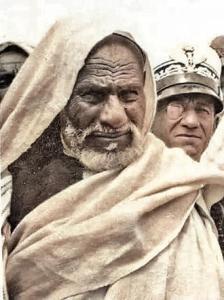
South Africa
The Arrival of
Reginald Edgar Walker
(March 16, 1889 in Durban – November 5, 1951)
He was a South African athlete and the 1908 Olympic champion in the 100 metres.
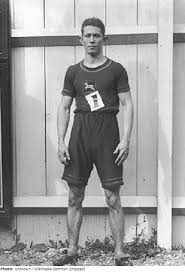
Jacob Wainwright
(c. 1859 – April 1892)
He was a Black African man who worked as an attendant for the explorer David Livingstone (March 9, 1813 – May 1, 1873). David was a Scottish physician, Congregationalist, pioneer Christian missionary with the London Missionary Society, and an explorer in Africa.
Wainwright joined a mission led by Edward C. Hore and in the late 1880s he joined the London Missionary Society mission in Urambo District, German East Africa (modern Tanzania) where he translated hymns and passages of scripture. He was 30 years old in 1889.
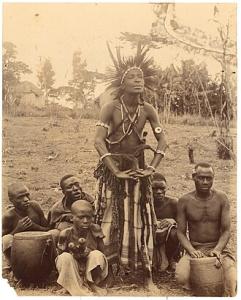
Bernard Mizeki
(c. 1861 –June 18, 1896)
He was an African Christian missionary and martyr. Born in Mozambique, he moved to Cape Town, attended an Anglican school, and became a Christian. Under the influence of his teachers, from the Society of St John the Evangelist (SSJE, an Anglican religious order for men, popularly called the Cowley Fathers), he became a Christian and was baptized on March 9, 1886. Besides the fundamentals of European schooling, he mastered English, French, High Dutch, and at least eight local African languages. In time he would be an invaluable assistant when the Anglican church began translating sacred texts into African languages
Through the work of the Cowley Fathers‘ mission, and particularly the night school run by German missionary Baroness Paula Dorothea von Blomberg, he became a Christian. He and five others were some of the first converts, baptized in St Philip’s Mission, Sir Lowry Road, on 7 March 1886. Shortly thereafter, Bernard (then about 25 years old) started work at St Columba’s Hostel, which was run by the missionaries for African men. Within a few months he was sent to Zonnebloem College to train as a catechist.
West Africa
Martha Ann Erskine Ricks
(c. 1817–1901)
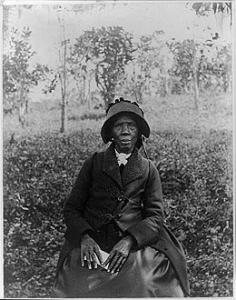
She was an Americo-Liberian woman among the early colonists to the Colony of Liberia. Born into slavery in Tennessee, she was freed by her father, George Erskine and emigrated at age 13 with him and her family to Liberia in 1830.
While chiefly working in agriculture there, Ricks also was known for her needlework and became an expert quilter. She became interested in Queen Victoria and worked for more than two decades on a quilt for her. In 1892 Ricks traveled with former First Lady Jane Roberts to England, where she received a Royal Audience with Queen Victoria and personally presented her the quilt.
She was 72 in 1889.
Central Africa
Pierre Savorgnan de Brazza
(January 26, 1852 – September 14, 1905)
He was an Italian-French explorer. With his family’s financial help, he explored the Ogooué region of Central Africa, and later with the backing of the Société de Géographie de Paris, he reached far into the interior along the right bank of the Congo River. He has often been depicted as a man of friendly manner, great charm and peaceful approach towards the Africans he met and worked with on his journeys, but recent research has revealed that he in fact alternated this kind of approach with more calculated deceit and at times relentless armed violence towards local populations. Under French colonial rule, the capital of the Republic of the Congo was named Brazzaville after him and the name was retained by the post-colonial rulers, one of the few African nations to do so.
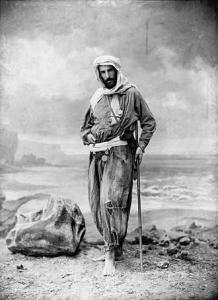
Meanwhile in Asia
East Asia
In China
The Hong Kong Golf Clubis a private golf club. It is home to the Hong Kong Open, a tournament co-sanctioned by the European and Asian Founded in 1889 as the Royal Hong Kong Golf Club, the club originally played in Happy Valley, a location shared with many other activities.
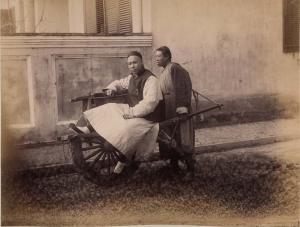
Historic photos of China (1889-1891) | International Photography Magazine (photogrvphy.com)
Empress Dowager Cixi
(November 29, 1835 – November 15, 1908)
She was a Manchu noblewoman of the Yehe Nara clan who effectively controlled the Chinese government in the late Qing dynasty as empress dowager and regent for almost 50 years, from 1861 until her death in 1908.
On March 5, 1889, Cixi retired from her second regency, but nonetheless served as the effective head of the imperial family
Guangxu married and took up the reins of power in 1889. By that year, the emperor was already 18, older than the conventional marriage age for emperors. Prior to his wedding, a large fire engulfed the Gate of Supreme Harmony at the Forbidden City. This event followed a trend of recent natural disasters that were considered alarming by many observers. According to traditional Chinese political theory, such incidents were taken as a warning of the imminent loss of the “Mandate of Heaven” by current rulers.
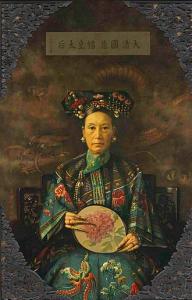
South Asia
In India
The Phulmoni Dasi rape case was a case of child marriage and subsequent marital rape in India in 1889, which resulted in the death of the 10-year-old girl, Phulmoni Dasi. The case led to the conviction of the husband in 1890 and triggered several legal reforms.
Although the autopsy report clearly indicated an injured vagina as the cause of death, the husband was later acquitted of the rape charge because laws on rape excluded marital rape from the purview of punitive law
George Curzon, 1st Marquess Curzon of Kedleston
( January 11, 1859 – March 20, 1925)
Styled The Honourable between 1858 and 1898, then known as The Lord Curzon of Kedleston between 1898 and 1911, and The Earl Curzon of Kedleston between 1911 and 1921, was a prominent British statesman, Conservative politician and writer who served as Viceroy of India from 1899 to 1905.
Curzon had travelled around the world: Russia and Central Asia (1888–1889); Persia (September 1889 – January 1890); Siam, French Indochina, China, Korea and Japan (1892); and a daring foray into Afghanistan and the Pamirs (1894–1895). He published several books describing central and eastern Asia and related foreign policy issues.[4] A bold and compulsive traveller, driven by orientalism, he was awarded the Patron’s Medal of the Royal Geographical Society for his exploration of the source of the Amu Darya (Oxus). His journeys allowed him to study the problems of Asia and their implications for British India, while reinforcing his pride in his nation and her imperial mission.
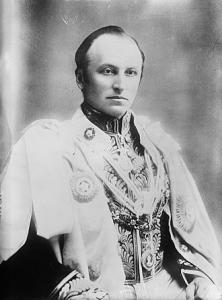
Central Asia
In Japan
The Constitution of the Empire of Japan ( known informally as Meiji Constitution was the constitution of the Empire of Japan which was proclaimed on February 11, 1889, and remained in force between November 29, 1890, and May 2, 1947. Enacted after the Meiji Restoration in 1868, it provided for a form of mixed constitutional and absolute monarchy, based jointly on the German and British models.[2] In theory, the Emperor of Japan governed the empire with the advice of his ministers; in practice, the Emperor was head of state but the Prime Minister was the actual head of government. Under the Meiji Constitution, the Prime Minister and his Cabinet were not necessarily chosen from the elected members of parliament.
During the Allied occupation of Japan, the Meiji Constitution was replaced with the “Postwar Constitution” on November 3, 1946; the latter document has been in force since May 3, 1947. In order to maintain legal continuity, the Postwar Constitution was enacted as an amendment to the Meiji Constitution.
In 1889, a gathering of 500 Christian students in Japan sent a telegram that reached students in the USA, Denmark, Sweden and Norway. Their message was simply: Make Jesus King.
Together · The gospel for the university · The story of IFES (ifesworld.org)
Southeast Asia
Đồng Xuân Market is a market in the center district Hoàn Kiếm of Hanoi, Vietnam. Originally built by the French administration in 1889, Đồng Xuân Market has been renovated several times with the latest being in 1994 after a fire that almost destroyed the market. Nowadays, Đồng Xuân Market is the largest covered market of Hanoi where the wholesale traders sell everything from clothes and household goods to foodstuffs.
West Asia
The Imperial Bank of Persia was a British bank that operated as the central bank and bank of issue in Iran (formerly known as Persia until 1935) between 1889 and 1929. It was established in 1885 with a concession from the Persian government to Baron Julius De Reuter (born Israel Beer Josaphat) a German–Jewish banker and businessman who later became a Christian and a British subject.
The bank was the first modern bank in Iran and introduced European banking ideas to a country in which they were previously unknown. The legal centre of the bank was in London and whilst it was subject to British law, its activities were based in Tehran. It also had operations in other Middle Eastern countries. It was later named British Bank of the Middle East (BBME) and is now called HSBC Bank Middle East Limited. After the Iranian Revolution of 1979, all the Iranian activities of this bank were transferred to Bank Tejarat.
Meanwhile in Russia
Trans-Siberian Railway
Construction on the iconic Trans-Siberian Railway continued throughout 1889. This monumental infrastructure project aimed to connect Moscow with Vladivostok, spanning a vast distance of over 9,000 kilometers. The railway played a crucial role in integrating and unifying Russia’s vast territories.
Dmitri Mendeleev (February 8, 1834 – February 2, 1907) the famous chemist, published his groundbreaking work on the Periodic Table of Elements in 1889, revolutionizing the field of chemistry worldwide.
The Kara Tragedy
The incident occurred on November 6-16, 1889. Political prisoners enjoyed certain privileges in comparison to criminals. The Katorga administration decided to abolish them, that in combination of harsh treatment of the women convicts, resulted in hunger strikes in protest. Eventually, the governor-general Andrei Korf ordered corporal punishment for a female prisoner of the Ust-Kara settlement. She was Nadezhda Sigida, a 27 year old convict arrested in 1886 for being a member of Narodnaya Volya and establishing an underground printing shop in Taganrog. After being flogged she killed herself with poison. As a protest, 23 other political prisoners also took poison resulting in the death of 6 convicts in total, 4 women and 2 men.
This event stirred a public outcry. As a consequence, the political prison of the Kara katorga was closed, and the use of corporal punishment against imprisoned women and dvorians was abolished by the law of 28 March 1893.
The 1889–1890 Pandemic
It is often referred to as the “Asiatic flu” or “Russian flu“, was a worldwide respiratory viral pandemic. It was the last great pandemic of the 19th century, and is among the deadliest pandemics in history. The pandemic killed about 1 million people out of a world population of about 1.5 billion (0.067% of population). The most reported effects of the pandemic took place from October 1889 to December 1890, with recurrences in March to June 1891, November 1891 to June 1892, the northern winter of 1893–1894, and early 1895.
According to researchers’ estimates, excess mortality from Russian influenza in the Russian Empire for the period 1889–1890 could be from 60,000 to 90,000 people, with lethality from the virus, a little more than 0.2%.
Although contemporaries described the pandemic as influenza and 20th-century scholars identified several influenza strains as the possible pathogen, several authors from the early 2020s suggest that it may have been caused by human coronavirus OC43.
Russia Literature
November 1889– Leo Tolstoy‘s novella The Kreutzer Sonata circulates in clandestine copies. In December the Russian authorities confirm that commercial publication will not be permitted.
Anton Chekhov publishes A Marriage Proposal
Meanwhile in Europe
The world’s first 24-sheet billboard was displayed at the Paris Exposition.
The Mayerling incident is the series of events surrounding the apparent murder–suicide pact of Rudolf, Crown Prince of Austria, and his lover, baroness Mary Vetsera. They were found dead on 30 January 1889 in an imperial hunting lodge in Mayerling. Rudolf, who was married to Princess Stéphanie of Belgium, was the only son of Emperor Franz Joseph and Empress Elisabeth, and was heir apparent to the throne of Austria-Hungary.
Rudolf’s mistress was the daughter of Albin von Vetsera, a diplomat at the Austrian court. Albin had been created a Freiherr (Baron) in 1870. The bodies of the 30-year-old Rudolf and the 17-year-old Mary were discovered in the Imperial hunting lodge at Mayerling in the Vienna Woods, 26.6 kilometres (16.5 mi) southwest of the capital, on the morning of 30 January 1889.
The death of the Crown Prince interrupted the security inherent in the direct line of Habsburg dynastic succession. As Rudolf had no son, the succession passed to Franz Joseph’s brother, Archduke Karl Ludwig, and his eldest son, Archduke Franz Ferdinand.
This destabilisation endangered the growing reconciliation between the Austrian and Hungarian factions of the empire. Succeeding developments led to the assassination of Archduke Franz Ferdinand and his wife Sophie by Gavrilo Princip, a Yugoslav nationalist and ethnic Serb, at Sarajevo in June 1914, and the July Crisis that led to the start of the First World War.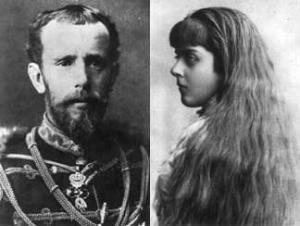
Northern Europe
Prevention of Cruelty to, and Protection of, Children Act
The Prevention of Cruelty to, and Protection of, Children Act 1889, commonly known as the Children’s Charter, was an Act of the Parliament of the United Kingdom of Great Britain and Ireland (as it then was).
It was the first Act of Parliament for the prevention of cruelty to children. It enabled the state to intervene, for the first time, in relations between parents and children. Police could arrest or investigate anyone found ill-treating a child, and enter a home if a child was thought to be in danger. The act included guidelines on the child labor laws and outlawed begging.
King’s Cross opened in November 1889 at a site in Clepington Road, Dundee. It was the city’s first permanent fever hospital and was built by Dundee Town Council to treat patients with infectious diseases, including typhus, diphtheria and smallpox. Until the late 1860s, such patients had usually been admitted to Dundee Royal Infirmary, although a temporary fever hospital had been set up in a converted building in Lower Union Street during the 1832 cholera outbreak.
In June 1889 – A lion escapes from a travelling menagerie at Llandrindod Wells located in Wales
Western Europe
On September 10, 1889,Albert I, ascended the throne of Monaco on the death of his father. He devoted much of his life to oceanography, exploration and science. Alongside his expeditions, Albert I made reforms on political, economic and social levels, bestowing a constitution on the principality in 1911.
Southern Europe
June 11, 1889– According to popular contemporary legend the archetypal pizza Margherita was invented by the Neapolitan pizzaiolo (“pizza maker”) Raffaele Esposito to create a pizza in honor of the visiting Queen Margherita. The Queen strongly preferred a pizza swathed in the colors of the Italian flag — red (tomato), green (basil), and white (mozzarella).
Sweden
The Yngsjö murder is the common name of one of Sweden‘s most notorious murder cases, which occurred on March 28, 1889 in Yngsjö, Skåne. Hanna Johansdotter was murder by her mother in-law Anna Månsdotter and her husband Per Nilsson who were having an Incestous affair with one another. Månsdotter thus became the last woman in Sweden to be executed.
Meanwhile in North America
Florvil Hyppolite
(May 26, 1828 – March 24, 1896)
He was a Haitian general and politician who served as the President of Haiti from October 17, 1889 to March 24, 1896. He got the presidency led a revolt against President of Haiti François Denys Légitime in August 1889.
According to The New York Times, General Hyppolite reportedly promised the United States that he would allow the construction of a base for the United States Navy in exchange for assistance with his revolt, though the report says that Môle Saint-Nicolas was never specified as a location. President Légitime would eventually resign and Hyppolite assumed the presidency of Haiti. Shortly after Hyppolite assumed the presidency of Haiti in October 1889, President of the United States Benjamin Harrison, acting under the advice of Secretary of State James G. Blaine, commissioned Rear-Admiral Bancroft Gherardi to negotiate for the acquisition of Môle Saint-Nicolas with the aim of establishing a naval coaling station there.
In Saint-Pierre
The only time the guillotine was used in North America was on Saint-Pierre in the late 19th century. Joseph Néel was convicted of killing Mr Coupard on Île aux Chiens on 30 December 1888, and subsequently executed by guillotine on 24 August 1889. The device had to be shipped from the French territory of Martinique and it did not arrive in working order. It was very difficult to get anyone to perform the execution; finally a recent immigrant was coaxed into doing the job. This event was the inspiration for the 2000 film The Widow of Saint-Pierre. The guillotine is now in a museum in Saint-Pierre
Canada
The Quebec rockslide occurred on September 19, 1889, after a day of heavy rain in Quebec City, Canada. An overhanging piece of slate rock broke off from Cap Diamant and fell 90 metres (300 feet) onto the houses below. The homes of 28 families on Champlain Street were crushed, burying roughly 100 people under 24 metres (80 feet) of broken slate rock. The final death toll exceeded 40 people.
Mexico
Tijuana is the most populous city in the state of Baja California, located on the northwestern Pacific Coast of Mexico. Tijuana is the municipal seat of the Tijuana Municipality and the hub of the Tijuana metropolitan area. It has a close proximity to the Mexico–United States border, which is part of the San Diego–Tijuana metro area.
The city was incorporated on July 11, 1889 as urban development began. The city has served as a major tourist destination since the 1880s. Today, Tijuana is a dominant manufacturing center for North America, hosting facilities of many multinational conglomerate companies.
The first Spanish mission referred to the settlement variously as Rancho Tía Juana, Tihuan and finally, Tijuana. While the city was founded as “Tijuana” in 1889, “Tia Juana” remained the English-language name for the river, as well as a U.S. settlement that is now part of San Ysidro, until approximately 1916.
Meanwhile in Central America
During the late 1880s, Guatemalan President Manuel Barillas pushed the idea in Guatemala and neighboring El Salvador and Honduras to recreate a Central American union like the long dissolved Federal Republic of Central America. The pressure resulted in the nations of Guatemala, El Salvador, Honduras, and Nicaragua signing a treaty in San Salvador on 15 October 1889 which proclaimed the Republic of Central America. The republic was set to be established on 15 September 1890, to coincide with the date of independence of the original Federal Republic. On 22 June 1890, however, Salvadoran President Francisco Menéndez Valdivieso was assassinated and his successor, Carlos Basilio Ezeta, pulled out of the treaty, effectively killing the union before it was even formed. Guatemala refused to recognize Ezeta’s presidency and declared war on El Salvador on 27 June 1890. The United States sent warships to the coasts of El Salvador and Guatemala to protect American interests in both countries and put pressure on both governments to end the war which the two agreed to do so on 21 August 1890. The treaty was signed by the five nations of Central America and legitimized Ezeta’s government.
Meanwhile in South America
Brazil
November 11– Republicans meet at the home of Rui Barbosa to plan a coup. The chief organizers are Benjamin Constant, Marshal Deodoro da Fonseca, Quintino Bocaiúva and Aristides Lobo.
November 15 – A coup d’état institutes the First Brazilian Republic.
November 17– Emperor Dom Pedro II and his family are sent into exile in Europe.
Dom Pedro II (December 2, 1825 –December 5, 1891), nicknamed the Magnanimous was the second and last monarch of the Empire of Brazil, reigning for over 58 years. Pedro II pushed through the abolition of slavery despite opposition from powerful political and economic interests. A savant in his own right, the Emperor established a reputation as a vigorous sponsor of learning, culture, and the sciences, and he won the respect and admiration of people such as Charles Darwin, Victor Hugo, and Friedrich Nietzsche, and was a friend to Richard Wagner, Louis Pasteur, and Henry Wadsworth Longfellow, among others.
There was no desire for a change in the form of government among most Brazilians, but the Emperor was overthrown in a sudden coup d’état that had almost no support outside a clique of military leaders who desired a form of republic headed by a dictator. Pedro II had become weary of emperorship and despaired over the monarchy’s future prospects, despite its overwhelming popular support. He did not allow his ouster to be opposed and did not support any attempt to restore the monarchy. He spent the last two years of his life in exile in Europe, living alone on very little money.
Dona Isabel (July 29, 1846 –November 14, 1921), nicknamed “the Redemptress“, was the Princess Imperial (heir presumptive to the throne) of the Empire of Brazil and the Empire’s regent on three occasions.
During her father’s absences abroad, Isabel acted as regent. In her third and final regency, she actively promoted and ultimately signed a law, named Lei Áurea or the Golden Law, emancipating all slaves in Brazil in 1888. Princess Isabel, who was a staunch supporter of the abolitionist movement, was awarded the Golden Rose by Pope Leo XIII.
Emperor Pedro II had advocated the abolition of slavery for decades, freeing his own slaves in 1840, but he believed slavery should be done away with slowly to avoid damaging the Brazilian economy.
November 19– A new national flag, devised by Raimundo Teixeira Mendes, is adopted by the republic.
Raimundo Teixeira Mendes (January 5, 1855 –June 28, 1927) was a Brazilian philosopher and mathematician. He is credited with creating the national motto, “Order and Progress”, as well as the national flag on which it appears.
November 20– Argentina becomes the first nation to recognize the new government of Deodoro da Fonseca.
Manuel Deodoro da Fonseca (August 5, 1827 –August 23, 1892) was a Brazilian politician and military officer who served as the first president of Brazil.
December 24 – The former royal family receive official notice that they will never be allowed to return to Brazil.
Joaquim Osório Duque-Estrada (April 19, 1870 – February 5, 1927) was a Brazilian poet, essayist, journalist, literary critic and professor. He is famous for writing in 1909 a poem that would become the lyrics of the Brazilian National Anthem in 1922.
In 1889 he moved to São Paulo in order to study at the Faculdade de Direito da Universidade de São Paulo, but would abandon the Law school in 1891 to become a diplomat. He would serve as a secretary in Paraguay, staying there for one year.
Meanwhile in Australia
Johanne Elizabeth “Bertha” Schippan (January 1888 –January 1, 1902) turned 1 years old in 1889. She is remembered for being murdered at 13 years old.
The murder of Johanne Elizabeth “Bertha” Schippan ) is an unsolved Australian murder. The victim, the youngest child in a large Wendish family, resided in the South Australian town of Towitta, located approximately 6 km (3.7 mi) west of Sedan. She was murdered on the night of January 1, 1902. Her 24-year-old sister, Maria “Mary” Auguste (Sept 10, 1877 –July 4, 1919), was prosecuted for the crime, but was eventually acquitted. Despite various theories, the case remains unsolved and continues to attract media attention.
Elizabeth Webb Nicholls (February 21, 1850 –August 3, 1943) was a key suffragist in the campaign for votes for women (also called ‘suffrage‘) in South Australia during the 1890s.
She took on several high-profile roles in the capital of South Australia, Adelaide and was President of the Woman’s Christian Temperance Union (WCTU) of South Australia,
In July 1886, three months after its formation, Nicholls joined the Woman’s Christian Temperance Union of South Australia. Becoming heavily involved in 1888, Nicholls became the provisional president of the Adelaide branch late that year and was elected colonial president in 1889, holding the position until 1897, one of the most prominent organisations in the successful campaigns which made South Australia the first of the Australian colonies to grant women the right to vote in 1894.
December 21– The poem “Clancy of the Overflow“, by Banjo Paterson, is first published in The Bulletin magazine.
Meanwhile in New Zealand
- January21, 1889 – American “Professor” Baldwin makes the first balloon ascent in New Zealand at Dunedin.
- December 2, 1889 – The S.S. Alice, the first mechanically powered vessel on the Rotorua Lakes, is launched.
Reputedly the first science fiction novel written by a New Zealander, Anno Domini 2000, or, Woman’s Destiny by former Premier Julius Vogel is published.
Start Me Up
- The rubber tire company Michelin gets things rolling on May 28 as it is registered by Édouard and André Michelin in Clermont-Ferrand, France.
- The first issue of Pulitzer Prize winning The Wall Street Journal is published in New York City.
- On March 7, 1889, the Pope issued the encyclical Magni Nobis, granting The Catholic University of America (CUA) its charter and establishing its mission as the instruction of Catholicism and human nature together at the graduate level. By developing new leaders and new knowledge, the university was intended to strengthen and enrich Catholicism in the United States.
- October 6 – Mount Kilimanjaro‘s summit is first reached, by German geologist Hans Meyer.
- October 6-The Moulin Rouge cabaret opens in Paris.
- Nintendo was founded as Nintendo Karuta on 23 September 1889 by craftsman Fusajiro Yamauchi in Shimogyō-ku, Kyoto, Japan, as an unincorporated establishment, to produce and distribute Japanese playing cards. or karuta (かるた, from Portuguese carta [“card”]), most notably hanafuda (花札, “flower cards”).
- June 19 – A Neapolitan baker named Raffaele Esposito invents the Pizza Margherita, named after the queen consort of Italy Margherita of Savoy. This is the forerunner of the modern pizza.
- 1889 – Religion, Magic, Psychic, Science The term parapsychology was coined by philosopher Max Dessoir. It is the study of alleged psychic phenomena (extrasensory perception, telepathy, precognition, clairvoyance, psychokinesis (also called telekinesis), and psychometry) and other paranormal claims, for example, those related to near-death experiences, synchronicity, apparitional experiences, etc ””
- The Pemberton Medicine Company first gives the world a smile as it teaches the world to sing in harmony as it is incorporated on January 15. Several years later in 1892 it becomes what we know today as Coke-a-Cola.
Build It and They Will Come
1889 Architecture
- In France, just in time for the World’s Fair 1889 Exposition Universelle The Eiffel Tower opens to the public on March 31, 1889.
- June 30 — Cathedral of Saints Peter and Paul in Providence, Rhode Island, designed by Patrick Keely, is consecrated.
- July 12 – Cathedral of the Blessed Sacrament (Sacramento, California), designed by Bryan J. Klinch, is completed.
Statehood Granted
- February 22 – President Grover Cleveland signs a bill admitting North Dakota, South Dakota, Montana and Washington as U.S. states.
- November 2– North Dakota and South Dakota are admitted as the 39th and 40th U.S. states, respectively.
- November 8 – Montana is admitted as the 41st U.S. state.
- November 11 – Washington is admitted as the 42nd U.S. state.
Rushings Around The World
- November 14 – Inspired by Jules Verne, pioneer American woman journalist Nellie Bly (Elizabeth Cochrane) begins an attempt to beat travel around the world in less than 80 days (Bly finishes the journey in 72 days, 6 hours and 11 minutes). She published Six Months In Mexico in 1889.
- April 22 – At high noon in Oklahoma Territory, thousands rush to claim land in the Land Rush of 1889. Within hours the cities of Oklahoma City and Guthrie are formed, with populations of at least 10,000.
The World of Literature in 1889
In January 1889 a science teacher named Herbert George W began to teach at Henley House School. This science teacher would have young Alan Alexander M as one of his students. Six years later the science teacher would start to bring to life in the imagination the concepts of time travel, alien invasion, invisibility, and biological engineering. all before the invention of the airplane and before movies and radio really took off the ground. His student in 1926 would bring to similar life, a stuffed bear and several other creatures. Both H.G. Wells and A.A. Milne both become authors whose works both still resonate with audiences in 2022.
Another couple of writers named Arthur Ignatius and Fingal O’Fflahertie Wills on August 30, 1889 enjoyed a dinner together at the Langham Hotel in London. The entertainer of the evening was an American editor named Joseph Marshall Stoddart of Lippincott’s Monthly Magazine. Mr. Stoddart would get both men to compose some more imaginative tales that rank up their with relevance to The Time Machine and Winnie the Pooh. Arthur would create The Sign of the Four and Fingal, The Picture of Dorian Gray, which would both appear in the magazine the following year. It doesn’t take elementary to see that The Sign, that was Arthur Conan Doyle’s contribution would become the second Sherlock Holmes novel and that if were being Earnest, O’Fflahertie was none other than the popular playwright and fairytale writer Oscar Wilde.
Wells, Milne, Doyle and Wilde were not the only spinners of fiction creating thought in 1889.
The literary output of 1889 was alive and kicking with…
- the novels of Charles Dickens living on in the drawings of a guy named Kyd in a book called ‘Character Sketches from Charles Dickens’ .
- the censored novella by Russian authorities called The Kreutzer Sonata by ‘War and Peace (1869) and Anna Karenina (1878) author Leo Tolstoy.
- one of the last books by the author of Little Women (1868). Louisa May Alcott: Her Life, Letters, and Journals. She had died just one year earlier in 1888.
- the men who first went to the moon in 1865 now involved with The Purchase of the North Pole by none other then one of time traveler Doc Brown’s favorite authors Jules Verne.
- Alice in Wonderland (1865) author Lewis Carrol‘s new book Sylvie and Bruno
- the time traveler from New England who ended up in Arthurian England in The Prince and the Pauper (1881) and Joan of Arc (1896) author Mark Twain‘s A Connecticut Yankee in King Arthur’s Court. Just 4 years earlier in 1885 Mark Twain’s classic The Adventures of Huckleberry Finn was published. And his first published story The Celebrated Jumping Frog of Calaveras County also appeared the same year Alice was published in 1865.
- the fairy tale collector and gatherer of the fantastic Andrew Lang. This first assortment of a series of books brings together the greatest and most well known tales of imagination including seven from the Brothers Grimm, five from Madame d’Aulnoy, three from the Arabian Nights, and four Norwegian fairytales, along with Gulliver’s travels to Lilliput, among other stories in The Blue Fairy Book.
- King Solomon’s Mines (1885) author H. Rider Haggard gives us Cleopatra.
- Hunchback of Notre Dame (1831) and Les Miserables (1862) author Victor Hugo’s posthumous books including one called Amy Robsart.
- Treasure Island (1883) and Dr. Jekyll and Mr. Hyde (1886) author Robert Lewis Stevenson’s new books The Master of Ballantrae and The Wrong Box who he wrote with co-author Lloyd Osbourne.
- Jerome K. Jerome‘s comic fictional English travelogue set on the River Thames, Three Men in a Boat (To Say Nothing of the Dog).
- Wizard of Oz (1900) author L.Frank Baum gave us nothing in 1889 because in living in the Aberdeen, Dakota Territory with his wife and running a store called “Baum’s Bazaar”.
- Cesare Lombroso published The Man of Genius a book which argued that artistic genius was a form of hereditary insanity. In order to support this assertion, he began assembling a large collection of “psychiatric art”. He published an article on the subject in 1880 in which he isolated thirteen typical features of the “art of the insane.” Although his criteria are generally regarded as outdated today, his work inspired later writers on the subject, particularly Hans Prinzhorn (June 6, 1886 – June 14, 1933).
1889 not only brought us creativity on the written page but in other areas of life as well.
Hey A Movie
The Very First Motion Pictures (1889)
- Some of the first moving pictures developed on celluloid film are made in Hyde Park, London by William Friese Greene.
- Monkeyshines is a series of experimental short silent films made to test the original cylinder format of the Kinetoscope, and are believed to be the first films shot in the United States.
On the Airwaves
The World of Sound in 1889
- Around the same time Columbia Phonograph breaks the sound barrier as it is formed in Washington, D.C..
- With Columbia giving the world phonographs, another inovation to record sound is that the first jukebox goes into operation, at the Palais Royale Saloon in San Francisc on November 23, 1889.
Good Sports in 1889
- In England The Football Alliance is founded as a rival to the Football League. It is short-lived and collapses in 1892 when the Football League expands. The Alliance is brokered by Sheffield Wednesday president John Holmes. Founder members include Sheffield Wednesday, Newton Heath (Manchester United), Nottingham Forest, Small Heath (Birmingham City) and Grimsby Town. Ardwick (Manchester City) will join in 1891 for the final season.
- National League v. American Association – New York Giants (NL) defeats Brooklyn Dodgers (AA) 6 games to 3.
- March 27, 1889— Montreal Hockey Club defeats Montreal Victorias 6–1 in the final challenge of the season to win the 1889 AHAC championship
Sanctifying Time
Saints And Other Catholics Alive And Well In 1889 |
Saints Who Were Alive In 1889. (patheos.com)
Mother Cabrini left for the United States from Italy, arriving in New York City on March 31, 1889, along with six other sisters to begin her missionary work.
- Miraculous cure at Lourdes of Sister Julienne
- Magni Nobis – On the Catholic University of America, by Pope Leo XIII, 7 March 1889
- Quamquam Pluries – On Devotion to Saint Joseph, by Pope Leo XIII, 15 August 1889
- The Pope as Alpine Climber, by Dr Antonio Ratti
The Sound of Music and Other Cultural Milestones
in 1889
- Also in the world of music the wax entertainment cylinder made its commercial debut. A relatively well-preserved and freely available example from that year is the Fifth Regiment March, played by Issler’s Orchestra)
- “Little Annie Rooney (Is My Sweetheart)” w.m. Michael Nolan is published.
- “Down Went McGinty” w.m. Joseph Flynn is published.
- Slattery’s Mounted Foot was written.
- February 17 – César Franck‘s Symphony in D minor is premièred at the Paris Conservatory under the direction of Jules Garcin.
- Joseph Kekuku is credited with inventing the Hawaiian steel guitar.


